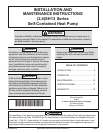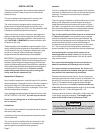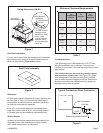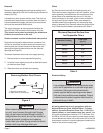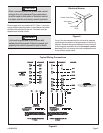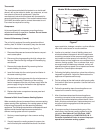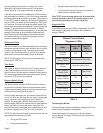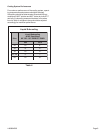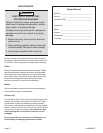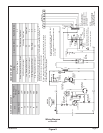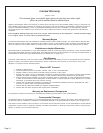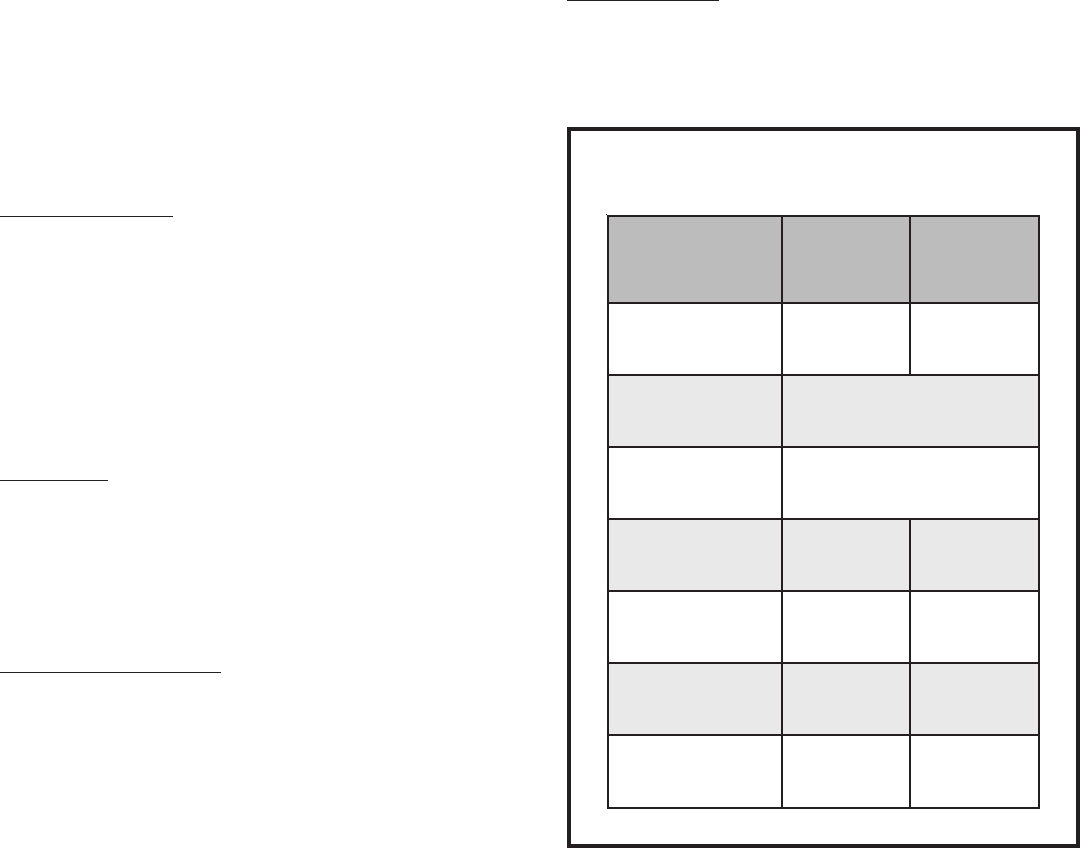
Page 8 # 48369K005
the timing selector jumper is not in place, the control
defaults to a 90-minute defrost interval. The maximum
defrost period is 14 minutes and cannot be adjusted.
A test option is provided for troubleshooting. The test mode
may be started any time the unit is in the heating mode and
the defrost thermostat is closed or jumpered. If the jumper is
in the TEST position at power up, the control will ignore the
test pins. When the jumper is placed across the TEST pins
for 2 seconds, the control will enter the defrost mode. If the
jumper is removed before an additional 5-second period has
elapsed (7 seconds total), the unit will remain in defrost
mode until the defrost thermostat opens or 14 minutes have
passed. If the jumper is not removed until after the addi-
tional 5-second period has elapsed, the defrost will termi-
nate and the test option will not function again until the
jumper is removed and reapplied.
Compressor Delay
The defrost board has a field-selectable function to reduce
occasional sounds that may occur while the unit is cycling
in and out of the defrost mode. The compressor will be
cycled off for 30 seconds going in and out of the defrost
mode when the compressor delay jumper is removed.
NOTE: The 30-second “off” cycle is not functional when
jumpering the TEST pins.
Time Delay
The timed-off delay is 5 minutes long. The delay helps to
protect the compressor from short cycling in case the
power to the unit is interrupted or a pressure switch opens.
The delay is bypassed by placing the timer select jumper
across the TEST pins for 0.5 seconds.
Pressure Switch Circuit
The defrost control includes LO-PS terminals to connect
an optional low pressure (loss of charge pressure) switch.
A high pressure switch (optional) can be connected to the
HI PS terminals (see Figure 8 on page 7).
During a single demand cycle, the defrost control will lock
out the unit after the fifth time that the circuit is interrupted
by any pressure switch wired to the control board. In
addition, the diagnostic LEDs will indicate a locked-out
pressure switch after the fifth occurrence of an open pressure
switch (see Table 3). The unit will remain locked out until
power to the board is interrupted, then re-established, or until
the jumper is applied to the TEST pins for 0.5 seconds.
NOTE: The defrost control board ignores input from the low
pressure switch terminals as follows:
• During the TEST mode
• During the defrost cycle
Defrost Control Board
Diagnostic LEDs
edoM
DELneerG
)2SD(
DELdeR
)1SD(
rewoPoN
draoBot
ffOffO
/noitarepOlamroN
draoBotrewoP
hsalFwolSsuoenatlumiS
elcyCtrohS-itnA
tuokcoL
hsalFwolSgnitanretlA
erusserPwoL
tluaFhctiwS
ffO hsalFwolS
erusserPwoL
tuokcoLhctiwS
ffOnO
erusserPhgiH
tluaFhctiwS
hsalFwolS ffO
erusserPhgiH
tuokcoLhctiwS
nOffO
Table 3
• During the 90-second start-up period
• For the first 90 seconds each time the reversing
valve switches heat/cool modes
If the TEST pins are jumpered and the 5-minute delay
is being bypassed, the LO PS terminal signal is not
ignored during the 90-second start-up period.
Diagnostic LEDs
The defrost board uses two LEDs for diagnostics. The LEDs
flash a specific sequence according to the condition as
shown in Table 3.
Circulating Air Blower
The circulating air blower is controlled by a timing circuit in the
blower control. Timings are not adjustable.
There is no blower “on” delay after a call for heating or
cooling. Blower “off” delay is 90 seconds after the thermo-
stat is satisfied.



